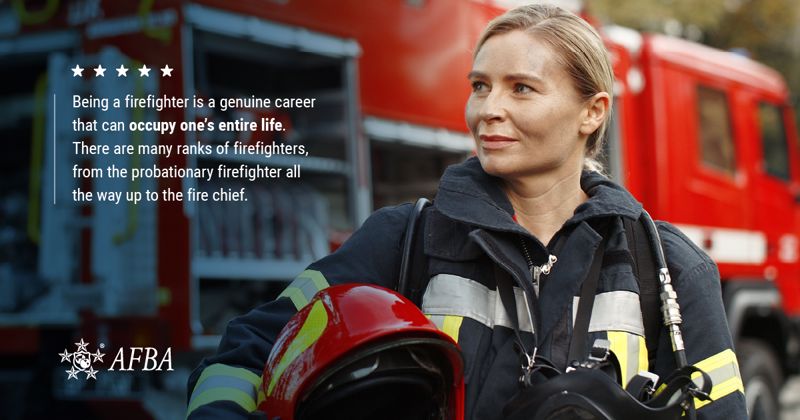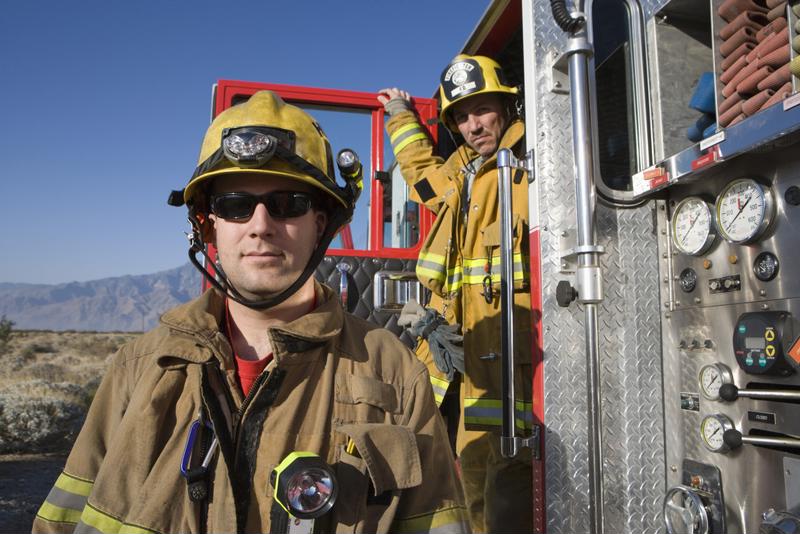A firefighter is one of the most honorable and difficult positions one can imagine. They’re first responders who are expected to arrive at the scene of any emergency call before anyone else. Having undergone EMT training and being responsible for running headfirst into the thick of danger, it might seem like firefighters know exactly what to do in any situation.
However, firefighters have superior officers, too, and those officers were once firefighters themselves. Being a firefighter is a genuine career that can occupy one’s entire life. There are many ranks of firefighters, from the probationary firefighter all the way up to the fire chief.
Here’s what the career path of a firefighter often looks like:
 The appearance of the U.S. Department of Defense (DoD) visual information does not imply or constitute DoD endorsement.
The appearance of the U.S. Department of Defense (DoD) visual information does not imply or constitute DoD endorsement.Probationary firefighter
As soon as someone meets the requirements in the recruit academy, they can start their journey as a probationary firefighter. This period lasts anywhere between 12 and 18 months and requires exemplary commitment and effort.
A probationary firefighter’s job isn’t easy, nor is it supposed to be. Their working hours will be long, and their sleeping periods will be strict. Above all, they’re expected to prove that they’d make a good firefighter, which means that they can get along with others.
Firefighter
If a prospective firefighter can make it through their probationary period, they become an official firefighter. Firefighters have four main jobs, including:
- Extinguishing fires.
- Investigating the causes of fires.
- Aiding anyone who might be injured.
- Helping prevent fires.
A firefighter is also responsible for rescuing people who are in danger, including during incidents not related to fire, such as natural disasters and auto accidents. Because virtually all firefighters have EMT training, they’re prepared to protect those in danger and administer first aid to anyone in need.
Driver engineer
These are the individuals who drive the fire truck and are duty-bound to get people in and out of a call safely.
Driver engineers need to have mastered the ins and outs of fire apparatus systems, fire trucks, equipment, and water supplies to do their job effectively because they’re responsible for all of these things.
Lieutenant
The firefighter lieutenant is capable of all the tasks of a driver engineer, plus ensuring the function of the fire department. They’re responsible for inspecting buildings to make sure they don’t have any fire hazards and conducting training exercises to prepare for special emergencies such as earthquakes and chemical spills.
Captain
A firefighter captain is responsible for managing their station. When at the scene of a fire, the captain assesses the situation and plans a course of action for firefighters to follow.
Depending on the size of the station, a firefighter captain may have staff working under them or, as the most senior officer at the station, be responsible for the operations of the entire unit.
Battalion chief
The battalion chief is the first rank of all the chief officers. Similar to other ranks, they’re responsible for fire safety compliance, equipment operation, staff evaluations, and making sure the station is in top shape. They have the additional task of being responsible for all officers under them, from the captain on down.
Assistant chief
Assistant chiefs are the second in command, taking over when the fire chief is out. They assist the fire chief in all tasks, including strategic and operational planning for fire stations. Having mastered the previous ranks, they’re extremely capable individuals.
Fire chief
Fire chiefs are the head honchos of the fire department. These individuals are responsible for strategizing and collaborating with local government officials to ensure the fire department is prepared for anything and to prevent disasters from happening in the first place.

